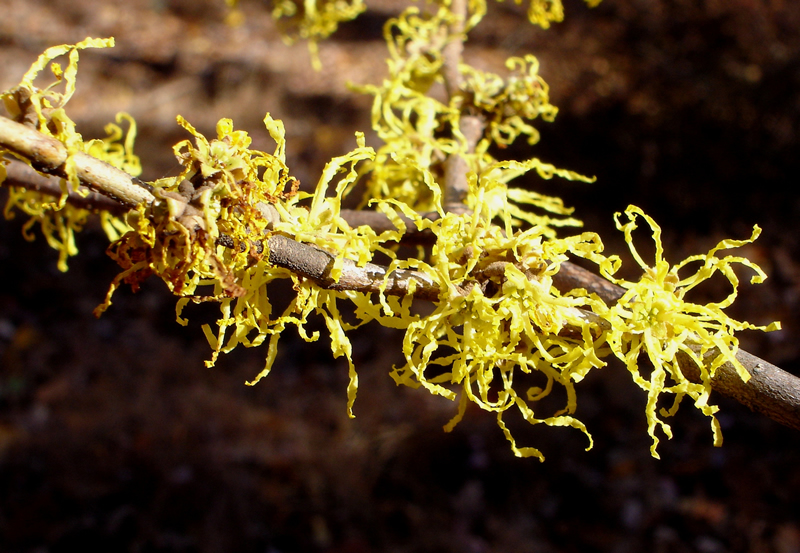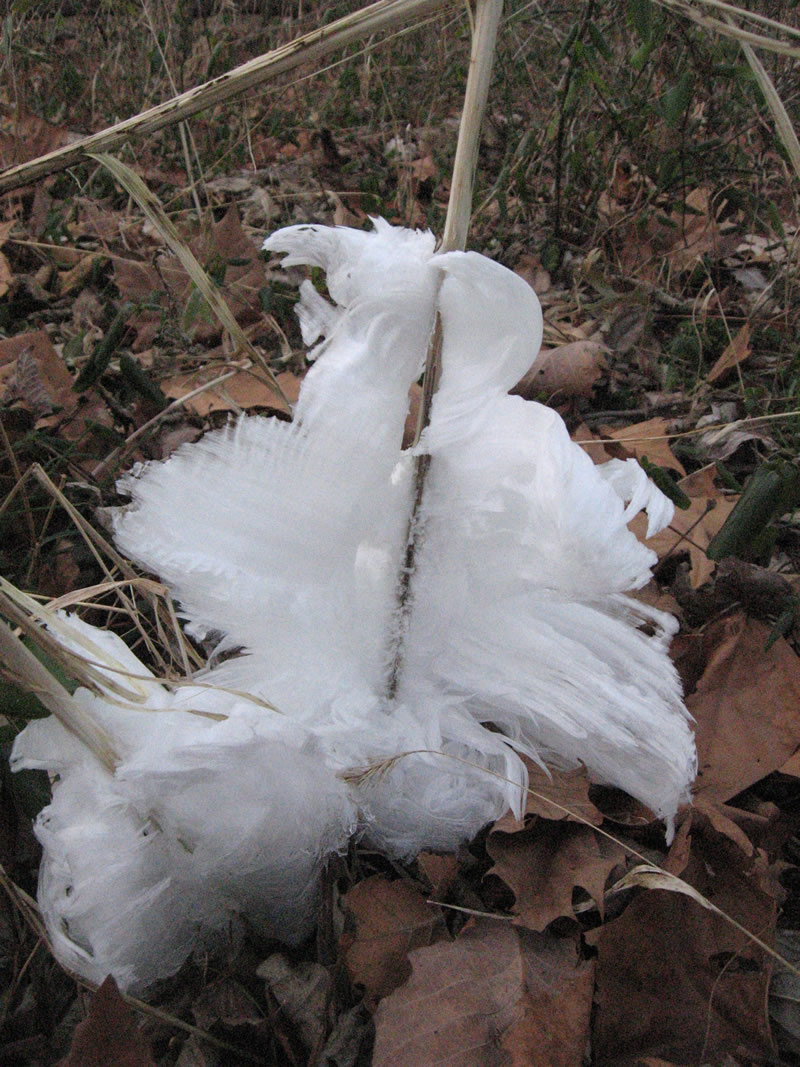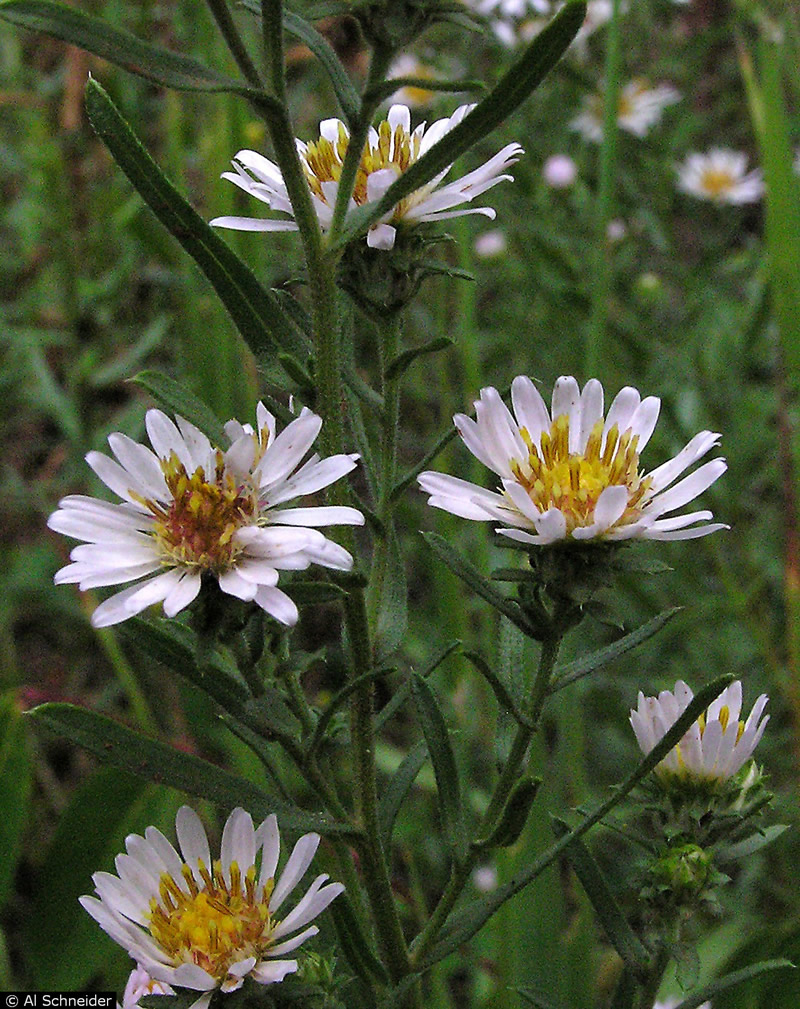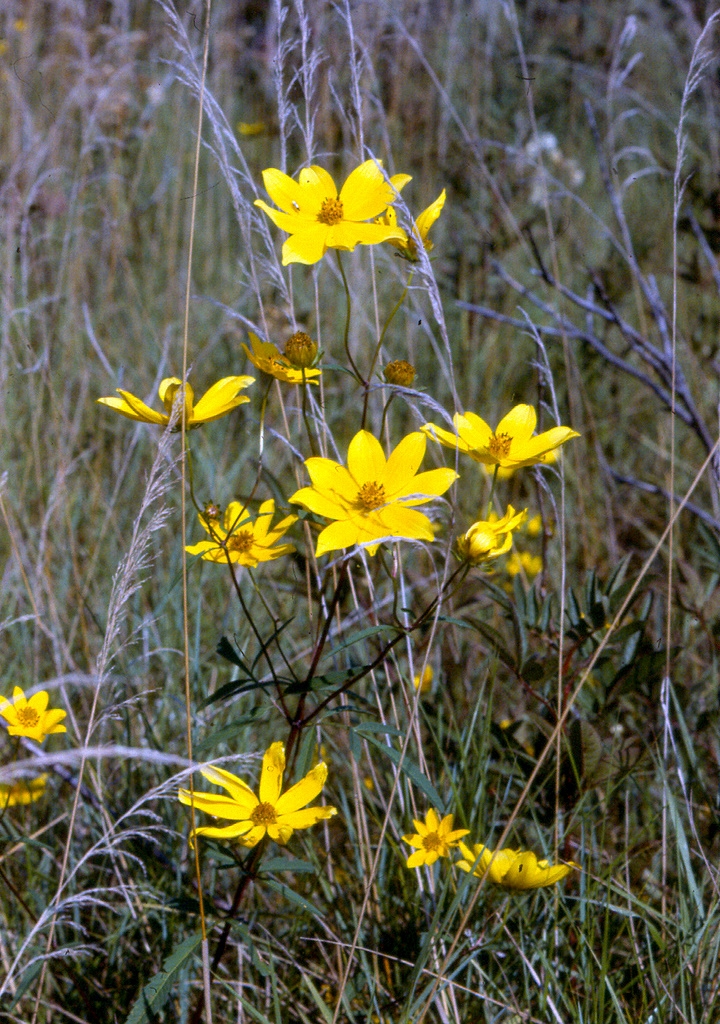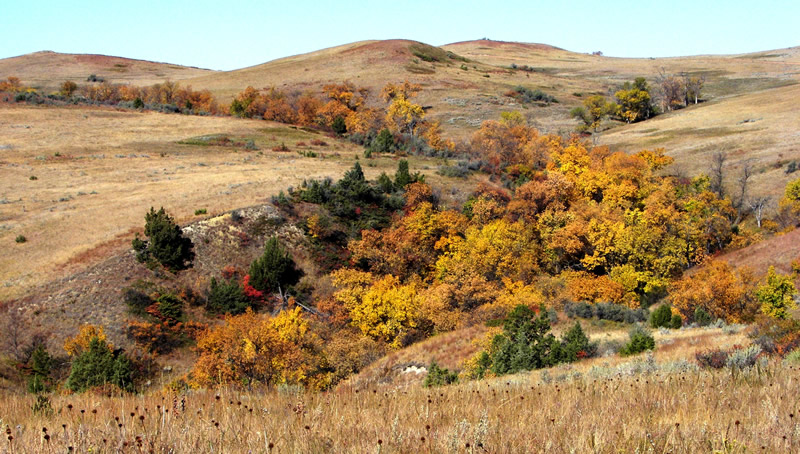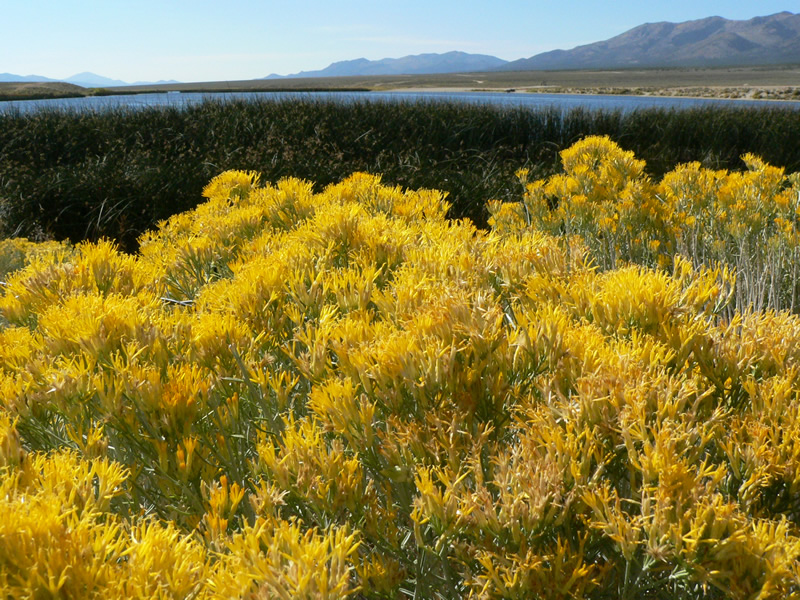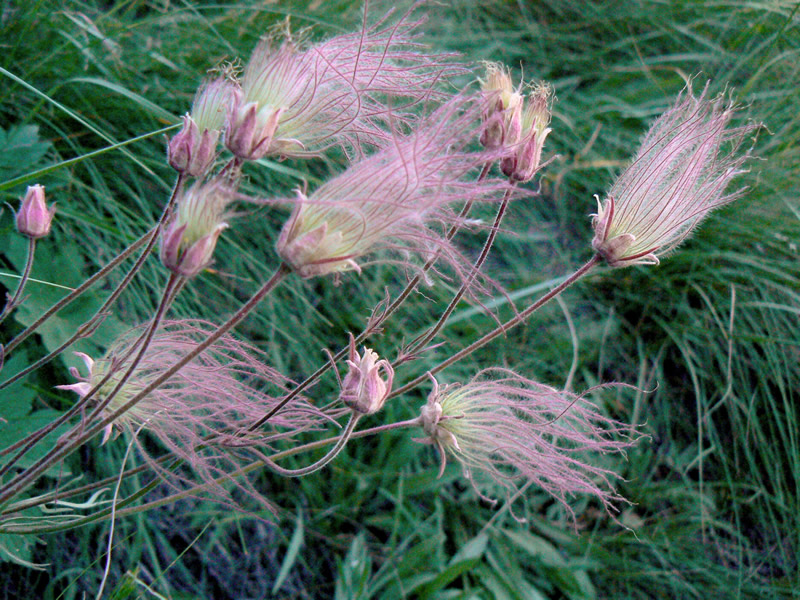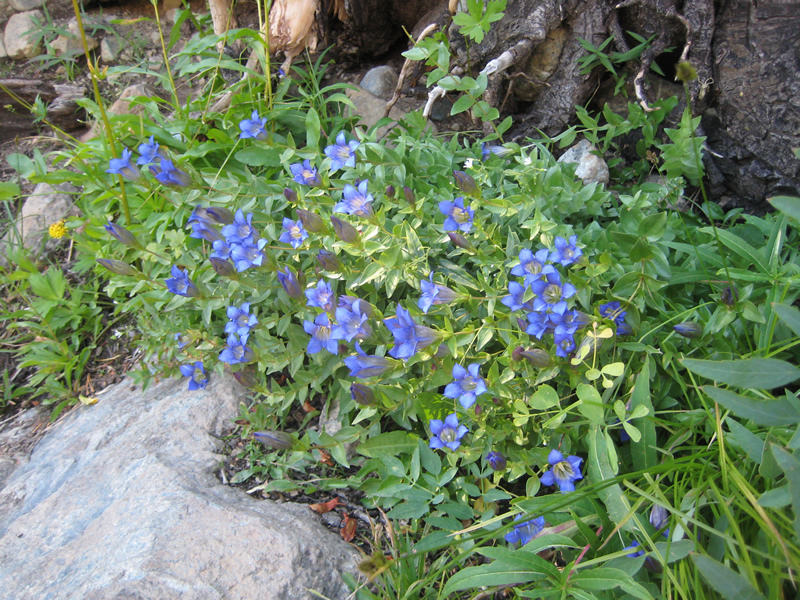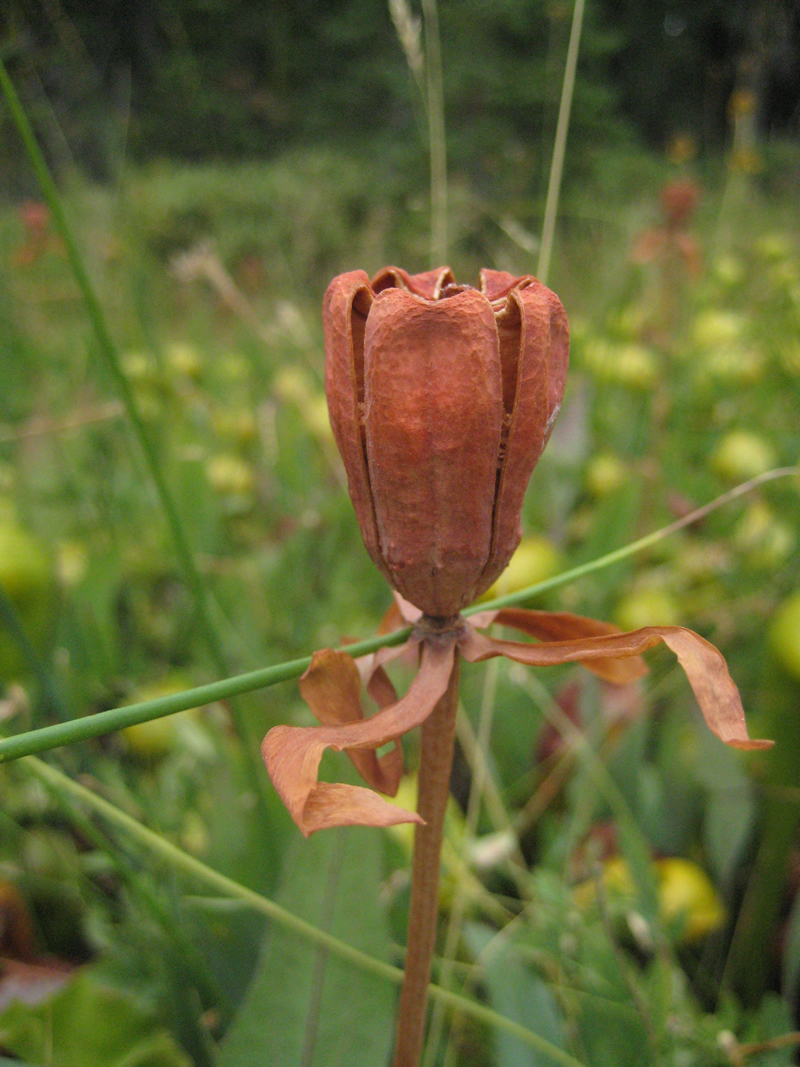Wildflowers - part of the pageantry of fall colors
O while my eye the landscape views What countless beauties are displayed What varied tints and nameless hues – — From the poem Autumn, John Clare, 1821
Look up into the trees and you’ll find beautiful vistas of leaves changing color in different regions of the United States this fall. But look down at the forest floor and you’ll find an even greater array of colors. There are approximately 20,000 wildflower species in the United States and the U.S. Forest Service has many stories to share with you.
For many of these wildflowers, this is the time of the year when they flower. Who can resist the blues and whites of asters, the yellows of goldenrods and sunflowers, and the spectacular red of cardinal flower?
Discover wildflowers:
-Get specific year-long wildflower viewing information for your forest or grassland.
-Celebrating Wildflowers is your encyclopedic tour of native plants.
-Download posters, interpretive panels and computer wallpapers on our Special Features.
What’s abloom across the country
In the Eastern United States
Along a favorite trail, you may be lucky enough to encounter the lemon-yellow flowers of the witch hazel (Hamamelis virginiana) as fall frosts become more common. Its brilliant flowers bring to a close another autumn wildflower season.
Photo courtesy: Larry Stritch
Discover the frost flowers of dittany (Cunila origanoides). Its former light blue flowers have come and gone and its seed cast to the wind, but from the base of their stems you may be lucky enough to see what looks like curling ribbons of ice as one last gem of their blooming glory, a frost flower.
Photo courtesy: Kathy Phelps
In the Great Plains
Autumn is a time for asters on the prairies of the Great Plains and the white prairie aster (Symphyotrichum falcatum.) So look for this fall wildflower as you hike the great outdoors in the crisp fall air.
Photo copyright: Courtesy of Al Schneider
In late summer and early fall, you’ll find bearded beggarticks (Bidens aristosa) also coming into flower on the prairies of the southern Great Plains.
Photo courtesy: Larry Stritch
Also, enjoy the diversity of fall color when you find the dark green foliage of the Rocky Mountain juniper (Juniperus scopulorum) along with their light gray cones as they mix with Green ash trees and choke cherry shrubs. Juniper berries are widely used by North American Native Tribes to treat a variety of illnesses and pain.
Photo courtesy: Kim Grotte
In the Great Basin
Rubber rabbitbrush (Ericameria nauseosa) is the iconic harbinger that fall has arrived in the West’s Great Basin which includes Utah, Nevada, and parts of California, Oregon and Idaho. It is a late summer bloomer that is often associated with Sagebrush. The dense clusters of yellow flowers are followed only days later by mature seed.
Photo courtesy: Teresa Prendusi
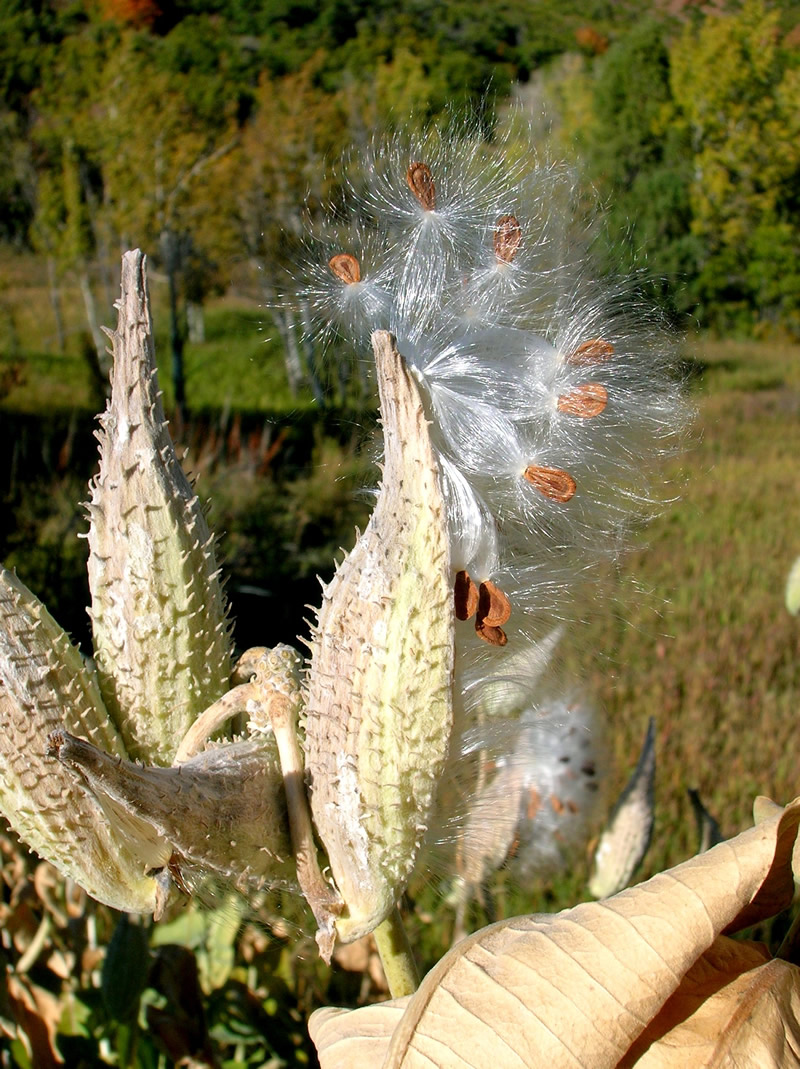
Showy milkweed (Asclepias speciosa) seed pods ripen and burst open in late summer-early fall. A favorite food source of many butterflies and bees, showy milkweed is common along roadsides and open areas throughout western North America.
Photo courtesy: Teresa Prendusi
In the Rocky Mountains
Throughout the Rockies and the western half of the United States, look for the large, orange-red rose hips of the wild Nootka rose (Rosa nutkana). They are a delight to animals and people alike in the fall.
Photo courtesy: Teresa Prendusi
The seeds and feathery rose-colored styles of Old Man’s Whiskers (Geum triflorum) make a lasting impression well into late summer and early fall. This lovely plant can be found from mid-to-high altitude forest meadows throughout the Rocky Mountains.
Photo courtesy: Teresa Prendusi
In the Pacific Mountain States
The Rainier pleated gentian (Gentiana calycosa) is a late season wildflower of mountain meadows in the Sierra Nevada and Shasta Trinity mountains of California.
Photo courtesy: Julie K. Nelson
Fall color is not only regulated to leaves and wildflowers, but colorful, distinctive seed capsules, such as this California pitcher plant (Darlingtonia californica) add to the tableau of fall color.
Photo courtesy: Julie K. Nelson

